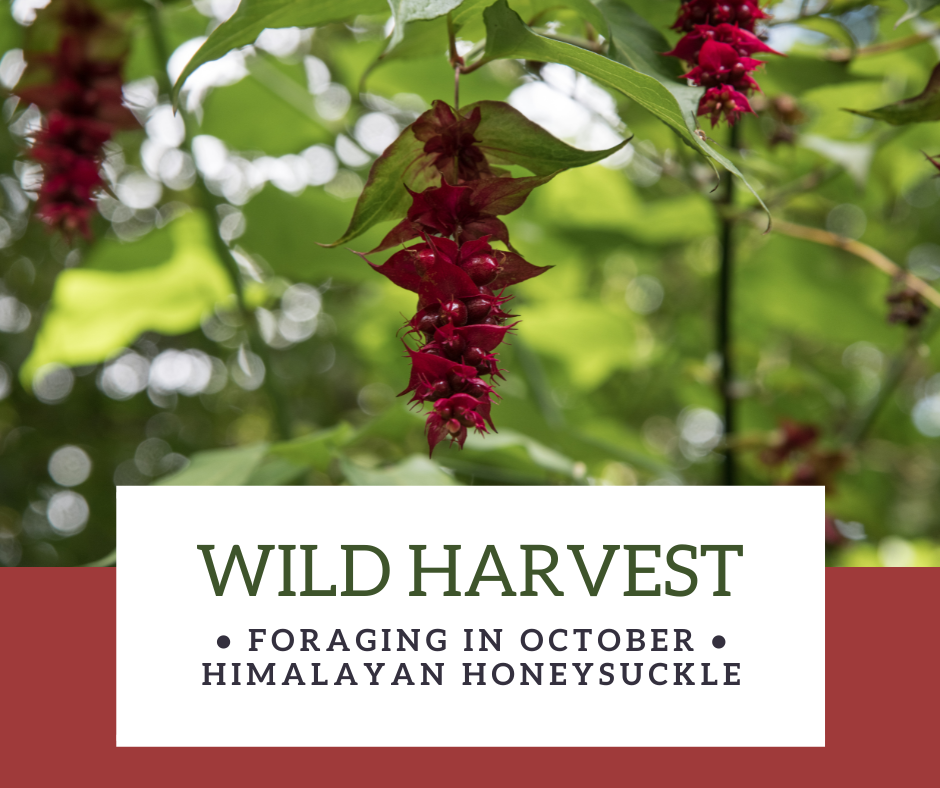
As the name would suggest, Himalayan honeysuckle (Leycesteria formosa) is native to Asia but forms vigourous bushes in the UK.
Himalayan honeysuckle plants develop a truly unique looking flower, which is attractive to all sorts of pollinators. The flowers, which appear from early summer, are white, bell/trumpet-shaped and hang from bright crimson bracts. The seeds form during October and November. They are dark red, taste of caramel and are attractive to birds like blackbirds and pheasants – which leads to two of the common names, Treacle Bush or Pheasant Berry, respectively. They can be eaten and used like any soft fruit, but care must be taken when harvesting as they are extremely soft when ripe. If they are eaten before being fully ripe, they have an astringent, acidic taste and are not very pleaseant. The berries are ripe when they easily burst while trying to pick them
The plants themselves are vigouous, multi-stemmed bushes which grow up to 6ft tall, with a similar spread. The plants are hardy, dying back in the winter and regrowing in the spring. They will survive severe pruning, almost down to the ground, and come back stronger the following spring.
While the bushes are most often seen cultivated in gardens, they are also often found growing wild in hedgerows and on verges, close to habitation.
If you are going to forage for Sea Buckthorn please follow the simple guidelines:
- Always be sure you are sure of the plant before you pick it and never eat any plant you are unsure of.
- Leave plenty behind for wildlife. The berries are favourites of pheasants and blackbirds
- Make sure you have permission to pick and that the bushes are not part of someones garden!
- Only pick where plants are plentiful

